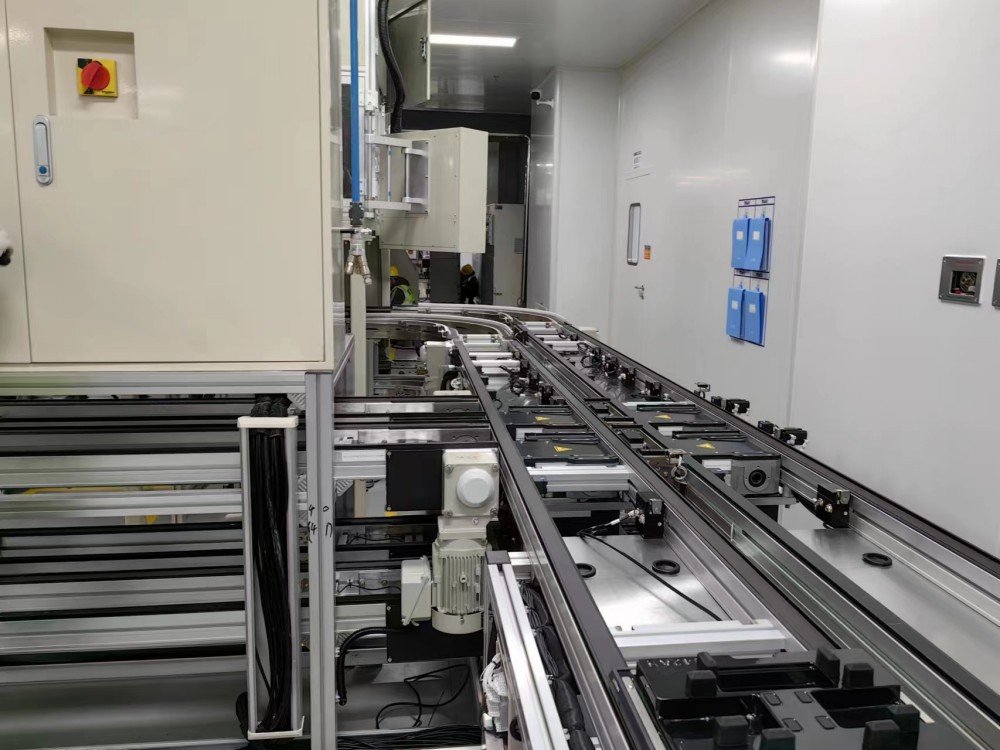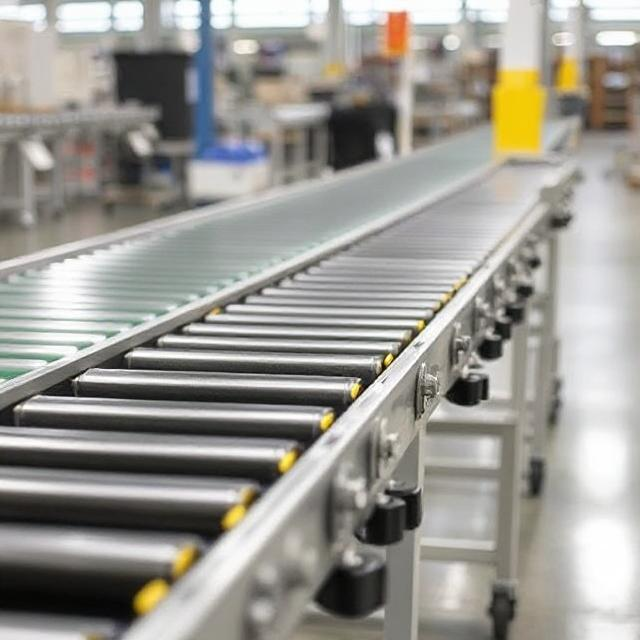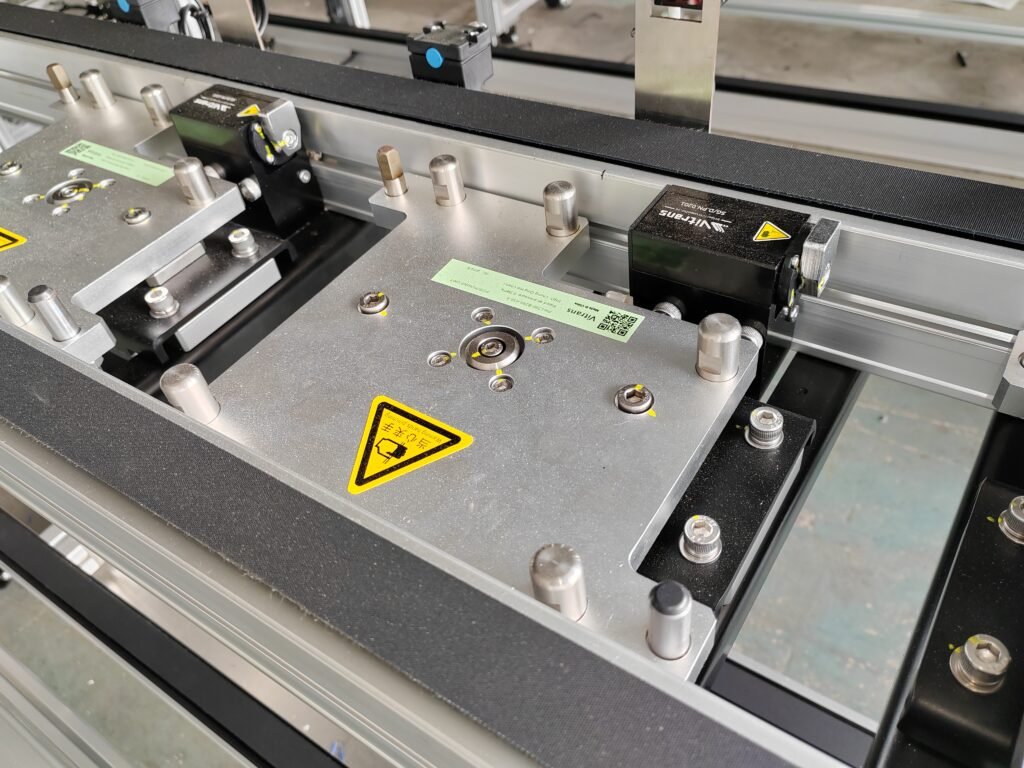Sistemi di trasporto sono essenziali per diversi settori industriali, in quanto facilitano la movimentazione di materiali, prodotti e merci in modo efficiente e sicuro. Conoscere i diversi tipi di sistemi di trasporto può aiutare le aziende a scegliere quello giusto per le loro esigenze specifiche. Questa guida approfondisce i vari sistemi di trasporto, evidenziandone le caratteristiche, i vantaggi e le applicazioni.
Che cos'è un sistema di trasporto?
A sistema di trasporto è un'apparecchiatura meccanica che trasporta materiali da un luogo all'altro. Sono ampiamente utilizzati nei processi di produzione, stoccaggio e distribuzione. Automatizzando il trasporto delle merci, i sistemi di trasporto possono aumentare la produttività, ridurre i costi di manodopera e migliorare la sicurezza sul posto di lavoro.
Vantaggi principali dei sistemi di trasporto
- Maggiore efficienza: L'automazione del processo di trasporto accelera la produzione.
- Riduzione dei costi di manodopera: Meno movimentazione manuale significa meno necessità di manodopera.
- Sicurezza migliorata: Riduce al minimo il rischio di lesioni associate al sollevamento e al trasporto manuale.
- Versatilità: Adatto a diversi materiali, dalle merci pesanti agli oggetti fragili.
Tipi di sistemi di trasporto
1. Trasportatori a nastro
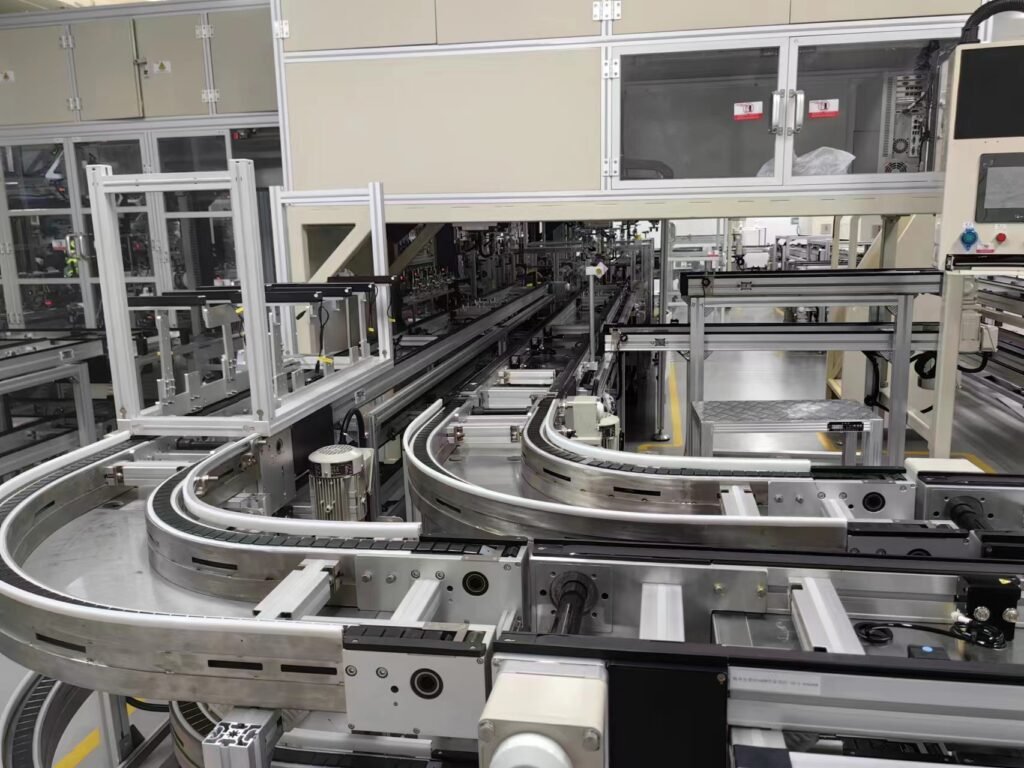
Panoramica
I nastri trasportatori sono uno dei tipi più comuni di sistemi di trasporto. Sono costituiti da un anello continuo di materiale, tipicamente gomma o tessuto, guidato da pulegge.
Caratteristiche
- Design flessibile: Può essere personalizzato per varie lunghezze e larghezze.
- Trasporto fluido: Ideale per movimentare prodotti con una superficie liscia e uniforme.
Applicazioni
- Magazzino
- Produzione
- Miniere
2. Trasportatori a catena ad accumulo
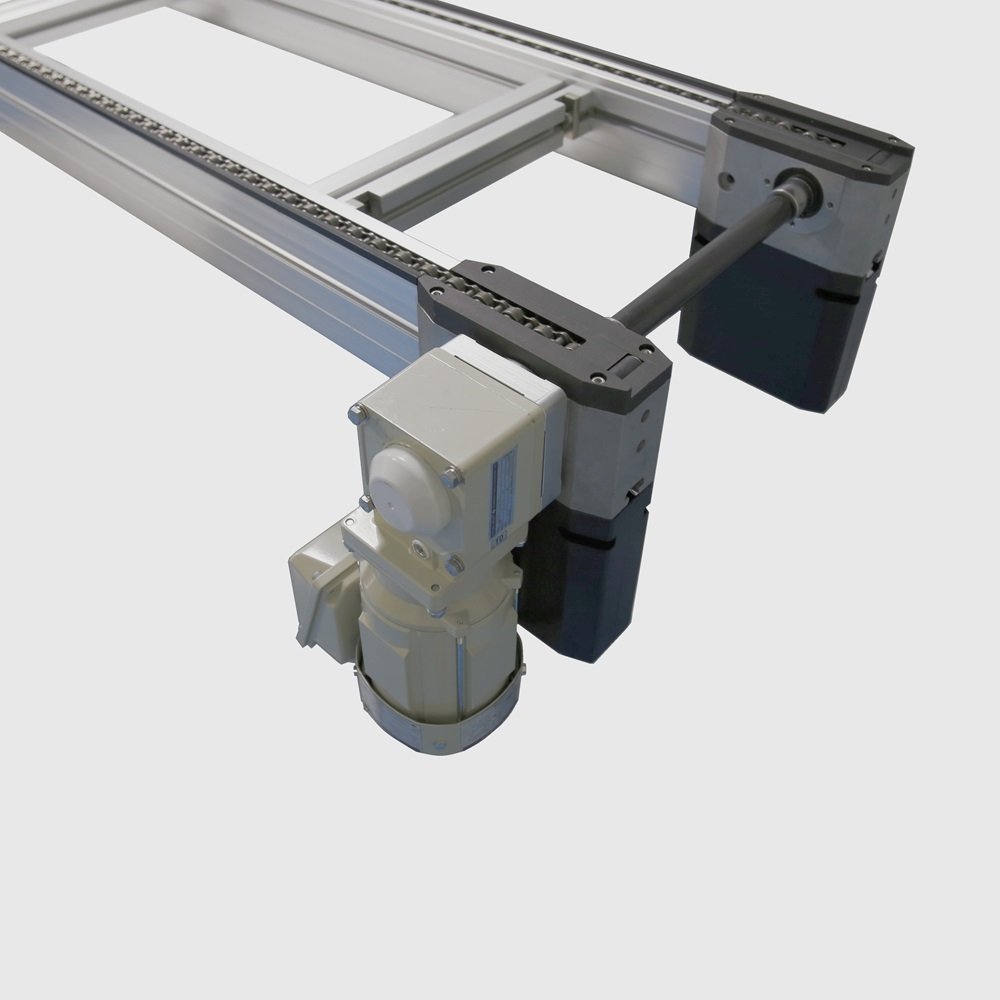
Panoramica
Trasportatori a catena accumulata utilizzano una serie di catene interconnesse per spostare gli articoli lungo una linea di produzione. Sono ideali per la movimentazione di carichi pesanti e offrono precisione nel posizionamento degli articoli.
Caratteristiche
- Elevata capacità di carico: Adatto al trasporto di materiali pesanti.
- Movimento controllato: Gli elementi possono essere arrestati o avviati singolarmente senza influenzare l'intero sistema.
Applicazioni
- Linee di assemblaggio automobilistiche
- Produzione di macchinari pesanti
- Industrie dell'imballaggio
3. Convogliatori di collegamento
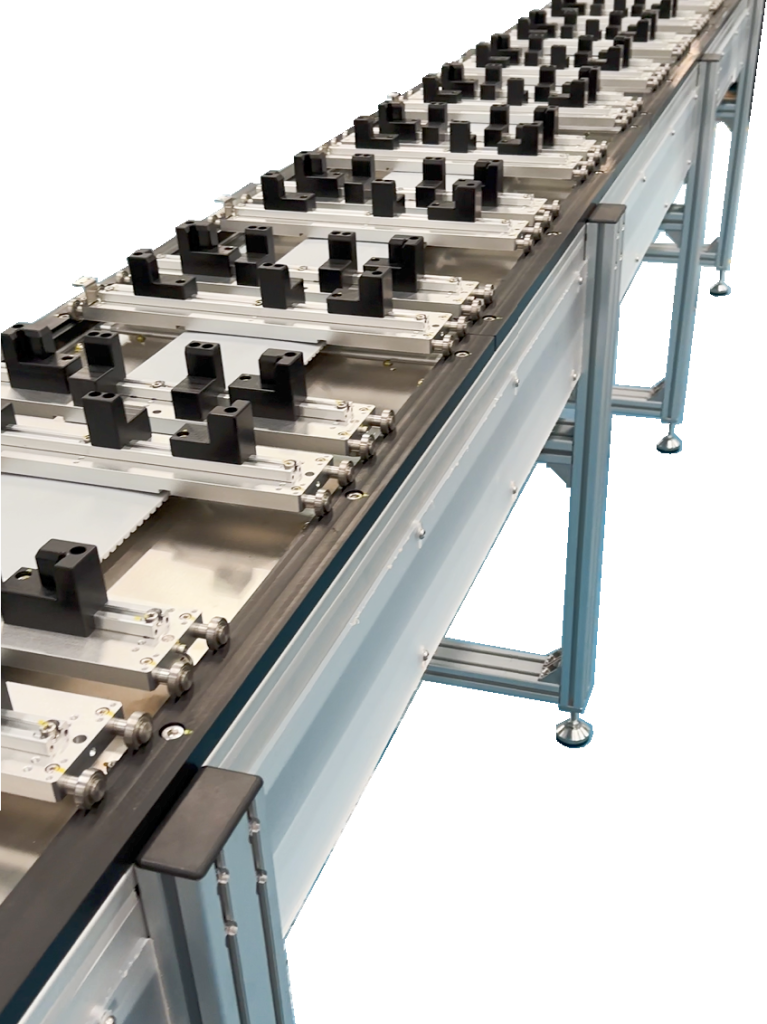
Panoramica
Convogliatori di collegamento sono dotati di componenti aggiunti, come guide o binari laterali, per agevolare la movimentazione di prodotti specifici. In questo modo si ottiene un maggiore controllo sul movimento dei prodotti.
Caratteristiche
- Personalizzazione: Può essere adattato a dimensioni e forme specifiche del prodotto.
- Maggiore stabilità: Impedisce che gli articoli si spostino durante il trasporto.
Applicazioni
- Lavorazione degli alimenti
- Produzione farmaceutica
- Assemblaggio dell'elettronica
4. Trasportatori di prodotti
Panoramica
I trasportatori per il trasferimento dei prodotti sono progettati per spostare gli articoli tra diversi sistemi di trasporto o aree di produzione. Svolgono un ruolo fondamentale nelle linee di assemblaggio in cui i prodotti devono cambiare direzione.
Caratteristiche
- Funzionalità versatile: Può gestire diversi tipi e dimensioni di prodotti.
- Trasferimenti efficienti: Assicura transizioni fluide tra i diversi sistemi di trasporto.
Applicazioni
- Magazzino
- Produzione
- Centri di distribuzione
Fattori da considerare nella scelta di un sistema di trasporto
Quando si sceglie un sistema di trasporto, bisogna considerare i seguenti fattori:
1. Capacità di carico
Determinare il peso massimo che il trasportatore dovrà gestire.
2. Tipo di materiale
Identificare i tipi di materiali o prodotti che verranno trasportati.
3. Vincoli spaziali
Valutare lo spazio disponibile per il sistema di trasporto, per assicurarsi che sia adatto alla vostra struttura.
4. Requisiti di velocità
Considerate la velocità con cui i materiali devono essere spostati per raggiungere gli obiettivi di produzione.
Domande frequenti sui sistemi di trasporto
1. Quali industrie utilizzano i sistemi di trasporto?
I sistemi di trasporto sono utilizzati in diversi settori, tra cui quello manifatturiero, di stoccaggio, minerario, alimentare e logistico.
2. Come si effettua la manutenzione di un sistema di trasporto?
La manutenzione regolare comprende il controllo dell'usura delle cinghie, la lubrificazione delle parti mobili e la verifica del corretto funzionamento di tutti i componenti.
3. I sistemi di trasporto possono essere personalizzati?
Sì, molti produttori offrono sistemi di trasporto personalizzabili per soddisfare esigenze aziendali specifiche, tra cui dimensioni, capacità e funzioni aggiuntive.
Tabella di confronto dei tipi di sistemi di trasporto
| Tipo di trasportatore | Capacità di carico | Flessibilità | Applicazioni |
|---|---|---|---|
| Nastri trasportatori | Moderato | Alto | Magazzino, Miniere |
| Trasportatori a catena ad accumulo | Alto | Moderato | Automotive, macchinari pesanti |
| Convogliatori di collegamento | Alto | Personalizzabile | Trasformazione alimentare, elettronica |
| Trasportatori di prodotti | Variabile | Moderato | Produzione, distribuzione |
Conclusione
Conoscere i diversi tipi di sistemi di trasporto è fondamentale per ottimizzare l'efficienza operativa e la produttività. Sia che stiate considerando trasportatori a nastro per un magazzino o trasportatori a catena accumulati per una linea di assemblaggio, la scelta del tipo giusto dipenderà dalle vostre esigenze specifiche e dai vostri requisiti operativi. Investendo in un sistema di trasporto appropriato, è possibile migliorare il flusso di lavoro e contribuire al successo complessivo dell'azienda.
Per maggiori informazioni sui sistemi di trasporto e per esplorare le opzioni di alta qualità, considerate i prodotti di Vitransè un produttore leader nel settore dei trasportatori per pallet e dei sistemi di trasferimento dei pallet. La sua vasta esperienza e il suo impegno per la qualità garantiscono una soluzione affidabile ed efficiente per le vostre esigenze aziendali.

